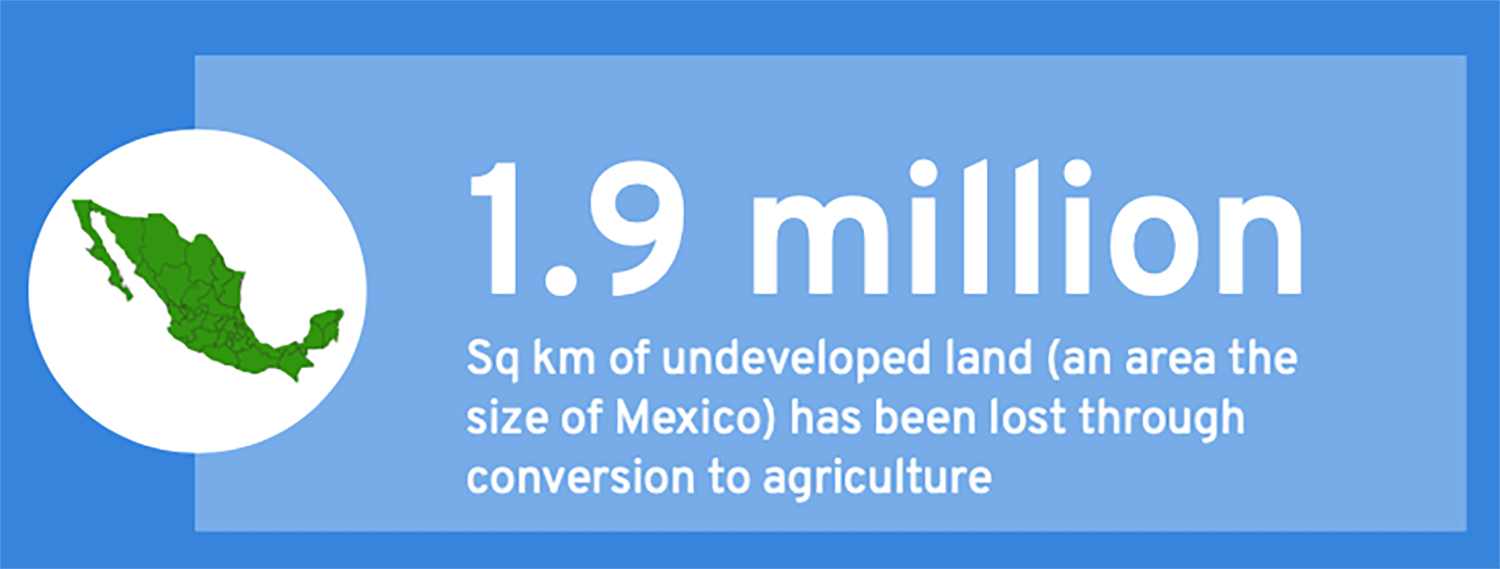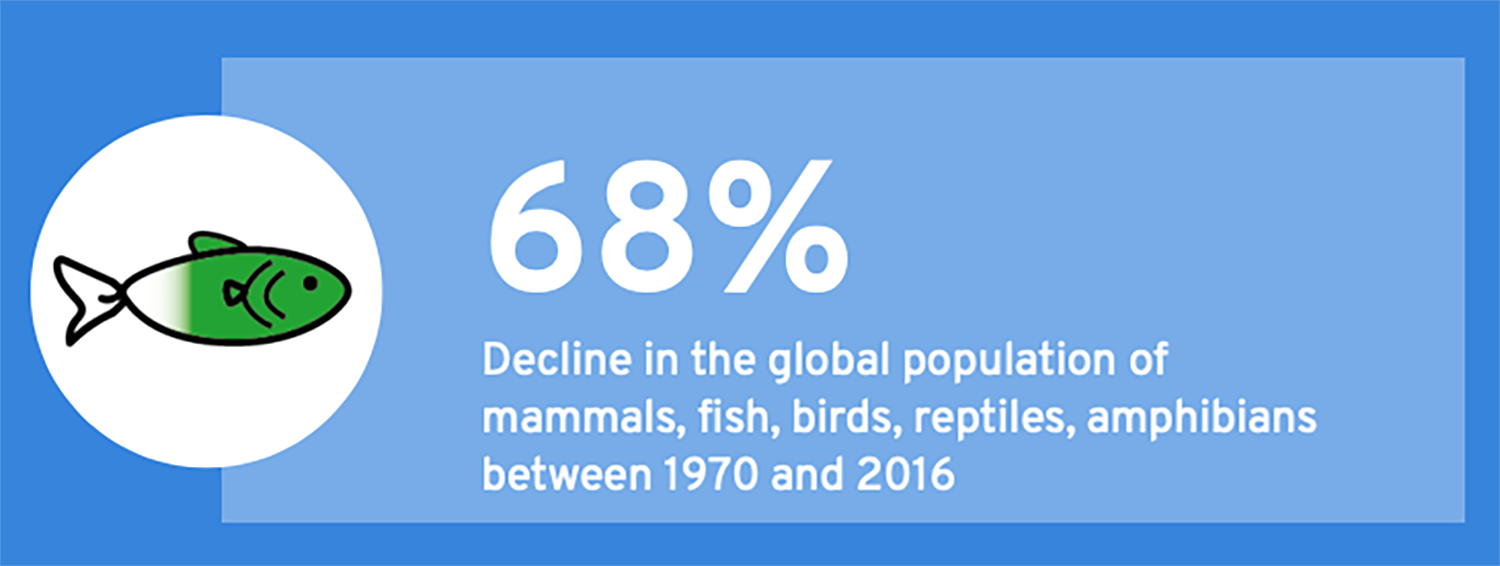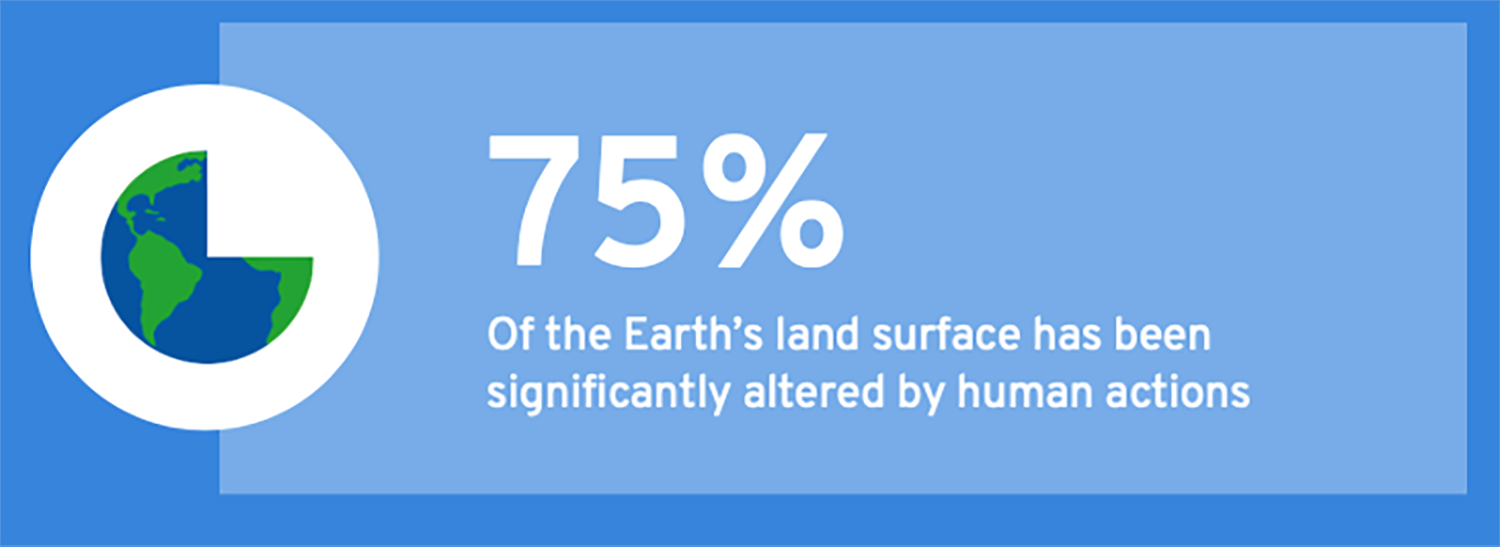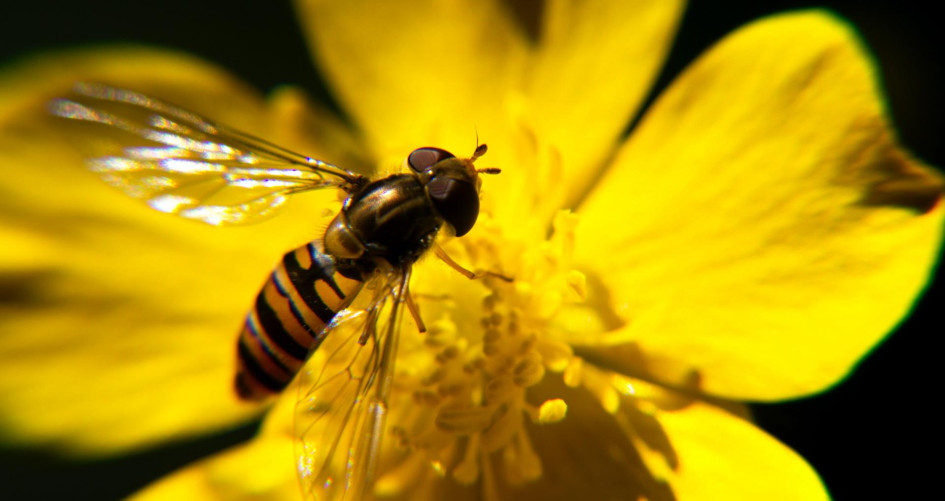What is Biodiversity?
The term biodiversity was first coined in 1985, a contraction of “biological diversity.” In broad terms it means all life on Earth from microbes to rainforests, and how that life interacts with each other. Essentially, it is the fabric that holds the planet – and every life on it – together.
Why is biodiversity important?
Biodiversity is vital. It plays a huge role in the integrity of forest, grasslands and marine ecosystems, and provides important adaptation functions such as buffering from climate extremes, regulating hydrological cycles, protecting soils, regulating temperatures in urban areas, reducing food insecurity and providing options for economic diversification, particularly during periods when climate change impacts reduce agricultural yields. All these functions are important, not just for the climate, but for life on Earth.

Why is it under threat?
Biodiversity is suffering due to – you guessed it! – human activity. This includes everything from over-fishing and over-hunting to pollution, climate change, agriculture and overdevelopment. We know that global populations of animals and plants are under huge threat. The 2019 Global Assessment Report by the Intergovernmental Platform on Biodiversity and Ecosystem Services (IPBES) reported that one million animal and plant species are threatened with extinction, the highest number in human history. A WWF Living Planet Report in 2020 revealed there was an average 68 per cent decline in the global population of mammals, fish, birds, reptiles and amphibians since 1970. Biodiversity loss both contributes to climate change and is a result of climate change, illustrating just how interconnected we all are. It is a vicious cycle we need to escape from, and fast.

What has this got to do with climate change?
As a workshop report from IPBES stated last year: “Limiting global warming to ensure a habitable climate and protecting diversity are mutually supporting goals, and their achievement is essential for sustainably and equitably providing benefits to people.” So, both climate change and biodiversity loss negatively affect each other. For example, increased temperatures as a result of emissions leads to oxygen depletion and acidification of marine environments, which has a huge negative effect on underwater biodiversity. Conversely, the loss of healthy ecosystems – such as rainforests – which help cool the planet, only speeds up the pace of climate change.

What is being done about this?
The UN Convention on Biological Diversity (CBD) entered into force in December 1993. It has three main objectives: The conservation of biological diversity; the sustainable use of the components of biological diversity; the fair and equitable sharing of the benefits arising out of the utilisation of genetic resources. As the CBD states in the fifth edition of its Global Diversity Outlook: “These pathways to a sustainable future rely on recognizing that bold, interdependent actions are needed across a number of fronts, each of which is necessary and none of which is sufficient on its own. This mix of actions includes greatly stepping up efforts to conserve and restore biodiversity, addressing climate change in ways that limit global temperature rise without imposing unintended additional pressures on biodiversity, and transforming the way in which we produce, consume and trade goods and services, most particularly food, that rely on and have an impact on biodiversity.” Last year saw the first collaboration between scientists from both the Intergovernmental Science-Policy Platform on Biodiversity and Ecosystem Services (IPBES) and the Intergovernmental Panel on Climate Change (IPCC). Their report underscored the interconnectedness of climate change and biodiversity. One UNFCCC-led initiative is the Nairobi Work Programme (NWP), which features 430+ partners and 2 active expert groups which work on eight thematic areas related to climate adaptation and resilience, one of which is Biodiversity and Ecosystems. The NWP has compiled a series of biodiversity projects around the world, which showcase best practice, and which can be scaled to other parts of the world. And the International Union for the Conservation of Nature (IUCN) took place in Marseille in early September, which focused on everything from biodiversity offset financing to scaling up nature-based solutions.
The UN Biodiversity Conference will be held virtually in October (with the second part of the conference to take place in Kunming, China in April and May next year), and policymakers will be hoping to put in place a far-reaching global diversity framework and ambitious targets that will help protect the planet for us all. The UN has urged countries to commit to protecting 30 per cent of their land and sea territories by 2030. Experts say at least 30 per cent of the Earth, if not 50 per cent, should be under conservation to maintain habitats under a changing climate. So far more than 50 countries, including the United States, have made the 30 per cent pledge.
Is there any good news?
Yes! So, far almost 100 countries have incorporated biodiversity values into national accounting systems. Last year, more than 22 million km2 of land and inland water ecosystems and 28.1 million km2 of coastal waters and oceans are within conserved areas, a 42 per cent increase since 2010. This shows that progress can be made when countries work together. It is vital then that this work continues into next year and beyond – after all, the future of our planet depends on it.
